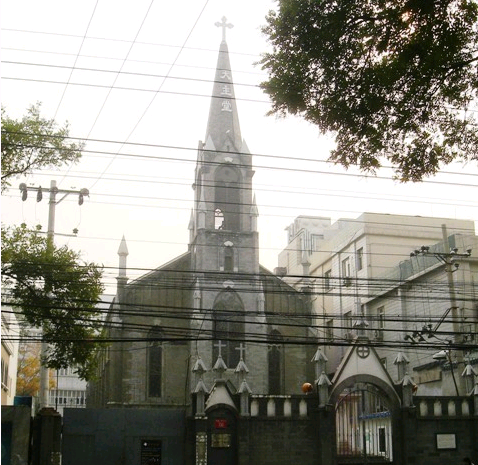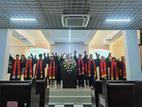The most famous Catholic churches in Beijing are the South Church (Xuanwumen Church), East Church (Wangfujing Church), North Church (Xishiku Church) and West Church (Xizhimen Church). The Xizhimen Church is the smallest and the only one not begun by Jesuits.
The West Church is known as the Chapel of Our Lady of Mount Carmel and was established by the Congregation of the Mission. This seminar was established by the French Jesuit Ai Meng Jue, with the purpose of nurturing persons for the priesthood and relief of the poor. The French Jesuits came to China in 1699. In addition to missions in Beijing and serving the royal court, they also developed educational centers in Hebei, Mongolia, Henan, and Zhejiang.
In 1705, the Italian missionary Teodoricus Pedrini came to Beijing as a special envoy of the Holy See. After completing his initial task, he stayed in China and was appointed to the royal palace to teach the young prince western science. His students include Yin Zhen, the fourth son of the emperor, who became the Yongzheng Emperor. Although it was during a 100-year ban of the church, out of gratitude to Teodoricus Pedrini, in 1723 the emperor authorized him to purchase land inside Xizhimen to build the Xizhimen Catholic Church, also called Church of Our Lady of Sorrows. Teodoricus Pedrini presided over the West Church’s education efforts for more than 40 years until he died on December 10, 1764.
In 1811, the Jiaqing Emperor promulgated the announcement that prohibited the spread of Catholicism in China. Except for those serving in the court, missionaries were not allowed to live in the capital or engage in missionary activities. Because of this the four priests of Xizhimen Church were expelled, the church was demolished, and the property was confiscated.
In the modern period, Catholic missionary activities were protected by a treaty, and the century-old ban on religion ended. At that time Catholic missionaries asked the Qing Court to return their property. However, because the West Church was demolished earlier during the Jiaqing Period, the Xizhimen area had become a residential area. Officials did not know the specific location of the West Church.
After searching and finding the old site, the church began the construction work and the new West Church was finally completed in 1867. However, only 32 years later, due to the Boxer Rebellion, the Xizhimen Church was destroyed again. The third rebuilding of the church was completed in 1912. The reconstruction work was carried out by Blanchier, Sisters of Charity, and the newly-built church was renamed the Chapel of Our Lady of Mount Carmel.
In 1966, the Xizhimen Church was forced to close and was used as a factory warehouse. The three-story bell tower of the church was also demolished. It was not reopened until 1994, and the clock tower and courtyard were renovated in 2008, with the restoration following the style of the third reconstruction.
The Xizhimen Church is a typical Gothic building with a three-story bell tower. The altar area has been changed and has a marble floor. The altar is a three-folded golden, splendid arched statue of the Coronation of the Virgin; the white Chinese altar is shaped like Noah's Ark. The area behind the altar, which forms an axis (near the bell tower entrance) is a unique blue and white octagonal baptistery, the only one in the Beijing Diocese. The tall Corinthian columns and pointed windows make the inside of the church appear lofty and beautiful.
- Translated by Kevin Feng











